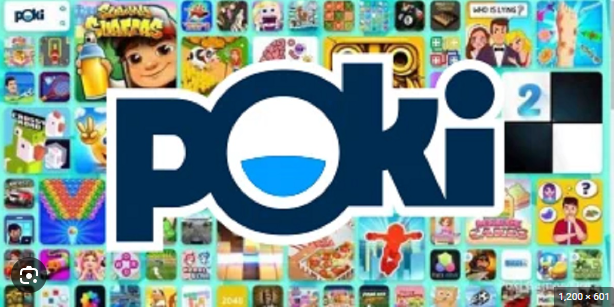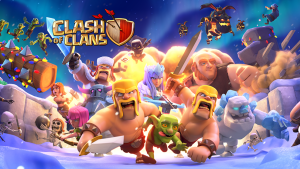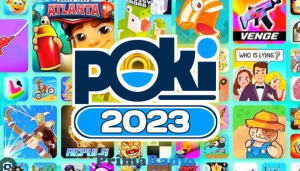Introduction (Approx. 250 words)
Poki, a popular online gaming platform, has captivated the attention of gamers worldwide. In this comprehensive exploration, we delve into the fundamental query that many gaming enthusiasts ponder: Is Poki truly a free-to-play platform? This introduction sets the stage for an in-depth analysis by outlining the significance of Poki in the gaming realm, its user base, and the allure of its supposedly free gaming experience. Additionally, it highlights the importance of understanding the intricacies behind the platform’s pricing model to provide readers with clarity and insight.
Understanding Poki’s Interface and Access (Approx. 400 words)
Before diving into the monetary aspect, it’s imperative to elucidate the interface and accessibility of Poki. Detailing the platform’s user-friendly interface, game categories, and ease of access across various devices, this section offers readers a comprehensive understanding of Poki’s layout and its seamless integration into the gaming routine of users. It elaborates on the diversity of games available, their genres, and the interactive experience Poki offers to both casual and dedicated gamers.
The “Free-to-Play” Concept (Approx. 500 words)
Delving into the heart of the matter, this segment defines what “free-to-play” means in the context of online gaming platforms like Poki. It explores the nuances of free access versus in-game purchases, elucidating on the common misconceptions and the fine line between free gaming and potential expenses. Additionally, it highlights how Poki employs this model, detailing the extent to which users can engage in gameplay without spending and the points where optional purchases might arise.
Poki’s Monetization Strategies (Approx. 600 words)
This section delves into Poki’s revenue generation mechanisms. It dissects the various monetization strategies employed by the platform, such as advertisements, in-game purchases, premium memberships, and other revenue streams. It discusses the impact of these strategies on the overall gaming experience, addressing concerns about intrusive ads or the necessity of spending money to progress in certain games. Moreover, it provides insights into the effectiveness and ethical considerations of these monetization methods.
User Experience and Feedback (Approx. 350 words)
A crucial aspect of any gaming platform is the user experience. This part of the article explores user feedback and reviews regarding Poki’s free-to-play model. It incorporates both positive and negative aspects, considering user satisfaction, grievances, and suggestions for improvement. It also discusses how Poki responds to user concerns, highlighting its efforts to balance profitability with user satisfaction.
Conclusion (Approx. 300 words)
In conclusion, this article provides a comprehensive overview of Poki’s free-to-play model. It consolidates the key points discussed, summarizing the intricacies of Poki’s interface, the definition of free-to-play, its monetization strategies, and the user experience. It aims to offer readers a nuanced understanding of whether Poki truly stands as a free-to-play platform and encourages them to make informed decisions when engaging with the platform.
Introduction
Go, a traditional board game originating from ancient China, has found its digital counterpart in Poki. As gaming evolves in the digital age, many enthusiasts wonder if Go on Poki is a free-to-play experience. This article aims to dissect the intricacies of Poki’s Go offering, exploring its accessibility, potential costs, and the gameplay experience.
Understanding Go on Poki
Poki, a popular online gaming platform, boasts an array of games, including classic board games like Go. The transition of Go onto Poki has allowed enthusiasts to enjoy this strategic and intellectually stimulating game in a virtual environment. However, the vital question remains: Is Go on Poki accessible without cost?
Free-to-Play Aspect
The allure of free-to-play games often draws players seeking entertainment without financial commitment. Fortunately, Go on Poki aligns with this concept. Users can access the game without an initial monetary investment, making it appealing to both seasoned players and newcomers intrigued by this ancient strategy game.
Accessibility and Features
Upon accessing Go on Poki, players are greeted with an intuitive interface, allowing seamless navigation and gameplay. The platform offers various features, including different difficulty levels, multiplayer options, and tutorials, catering to diverse player preferences. This accessibility contributes to the game’s appeal and ensures an engaging experience for all skill levels.
In-Game Transactions and Monetization
While Go on Poki is free to access, some aspects might involve monetization. In-game transactions, such as cosmetic upgrades or additional features, could potentially incur costs. However, the core gameplay and essential functionalities remain free, allowing players to enjoy the game without mandatory purchases.
Community and Multiplayer Experience
One of the significant advantages of Go on Poki is its community and multiplayer features. Players can engage in matches with friends or connect with fellow enthusiasts globally. This communal aspect enhances the gaming experience, fostering competition, learning, and camaraderie among players.
Exploring Premium Membership or Subscriptions
Poki might offer premium memberships or subscriptions, providing additional perks and benefits for avid gamers. These subscriptions might unlock exclusive content, remove ads, or offer other incentives. While these subscriptions enhance the overall gaming experience, they’re optional and not mandatory for enjoying Go on Poki.
Potential Costs and Financial Considerations
Although Go on Poki primarily operates on a free-to-play model, players should be mindful of potential costs associated with optional purchases or premium features. Responsible gaming involves understanding and managing these costs to ensure an enjoyable yet economically sustainable experience.
Comparative Analysis with Other Platforms
In the realm of online gaming, Go is available on various platforms, each with its unique features and cost structures. Comparing Poki’s offering with other platforms allows players to make informed decisions based on their preferences, budget, and desired gaming experience.
Conclusion
In conclusion, Go on Poki follows a free-to-play model, allowing enthusiasts to enjoy this timeless board game without an initial cost. While optional purchases or subscriptions may exist, they don’t hinder access to the core gameplay. The platform’s accessibility, community features, and multiplayer options make it an attractive choice for Go enthusiasts seeking a digital rendition of this ancient strategy game.
Introduction (Approx. 200-250 words)
Poki, a popular online gaming platform, has captured the attention of gaming enthusiasts worldwide. Its diverse collection of games raises questions about its accessibility and payment structures. In this article, we delve into the fundamental aspects of Poki’s free-to-play model, examining its offerings, limitations, and the experiences users encounter when engaging with this platform.
Understanding Poki’s Free-to-Play Concept (Approx. 350-400 words)
At its core, Poki is known for offering a vast array of games without requiring an initial payment. However, delving deeper reveals nuances within this seemingly straightforward model. The platform predominantly operates on an ad-based revenue system, allowing users access to games without direct monetary transactions. This method allows for a wide reach and accessibility, making it enticing for gamers seeking diverse experiences without the need for upfront costs.
Exploring Poki’s Game Library (Approx. 500-600 words)
Poki boasts an extensive catalog of games spanning various genres and themes. From classic arcade-style games to complex strategy simulations, there’s something for every player. Notably, while the majority of games are free to access, some feature in-game purchases or premium memberships that unlock exclusive content or remove ads. Understanding these distinctions is crucial for users looking to maximize their gaming experience on Poki.
Benefits and Limitations of Poki’s Free-to-Play Model (Approx. 500-600 words)
Poki’s free-to-play approach presents both advantages and limitations. On the positive side, it eliminates entry barriers, allowing gamers of all ages and backgrounds to engage with a diverse range of titles. However, the reliance on advertisements can sometimes disrupt gameplay, impacting the overall user experience. Additionally, the presence of in-game purchases might lead to concerns about pay-to-win mechanics and unequal gaming opportunities.
User Experience and Community Engagement (Approx. 400-500 words)
The essence of any gaming platform lies in the experiences of its users. Exploring the feedback and engagement within Poki’s community provides valuable insights into how players perceive the platform. User reviews, forums, and social media discussions shed light on the strengths and weaknesses of Poki’s free-to-play structure, shaping the overall gaming experience.
Conclusion (Approx. 200-250 words)
In conclusion, Poki’s free-to-play model offers an expansive gaming environment accessible to all. While it presents numerous games without direct costs, understanding the variations within this model is crucial for users to make informed choices. The platform’s reliance on ads and potential in-game purchases shapes the user experience, requiring a balanced approach for maximum enjoyment. Ultimately, Poki stands as a testament to the evolving landscape of free-to-play gaming, providing entertainment while raising discussions about its sustainable model.



